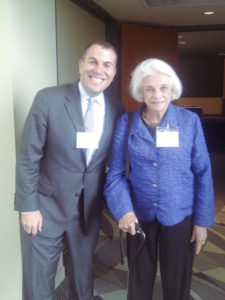A Day in the Life of the American Contract
Do practicing lawyers get to vote on legal-writing controversies? Not if you ask some self-styled pundits.
Like other forms of writing, legal writing has its descriptivists (“Here’s how lawyers do write”) and its prescriptivists (“Here’s how lawyers should write”).
The prescriptivists, who dominate the field, have the virtues of idealism and of trying to foment large-scale change in the profession. But they are sometimes dismissed as out-of-touch scolds who don’t know what it means to practice law or to satisfy clients in today’s ruthless legal market.
The descriptivists, for their part, may be more in touch with the demands of law practice. But perhaps they’re too quick to assume that the legal-writing conventions reflect practitioners’ conscious intent rather than inertia or the fear of deviating from what’s perceived to be the norm.
I’ve tried to stake out a hybrid approach. For briefs and opinions, for example, I do “prescribe,” but not what’s in my head or my heart. Instead, I try to work empirically, sharing patterns and techniques that I’ve extracted from the work of revered lawyers and judges.
And yet for contracts, I’m more inclined to defer to “reasonable” practitioners, because they nearly always work from precedent, and because their goal is to keep their clients out of trouble, not to strive for some sort of Platonic Ideal in drafting. Those constraints, incidentally, might help explain why so many proposed contract-drafting reforms have been roundly and routinely ignored.
In fact, of all the legal writing “subspecialties,” contract drafting sees the greatest chasm between the practitioners and the talking heads.
How to bridge the gap?
Here’s one thought. If more than 75 percent of seasoned corporate lawyers adopt a certain practice in contract drafting–including lawyers who are familiar with the received wisdom of the drafting punditocracy–should there be a rebuttable presumption that those practitioners aren’t just lazy or ignorant?
Maybe. And so today I will play pure descriptivist.
In homage to the coffee-table book A Day in the Life of America, I give you A Day in the Life of the American Commercial Contract. On the excellent site www.LawInsider.com, I pulled 25 contracts, all filed with the SEC on a single day: April 14, 2016. The contracts run the gamut from escrow agreements to asset purchase agreements.
Before you scroll down, I want you to guess what percentage of my sample contracts, many of them filed by prestigious firms, engage in these alleged drafting peccadilloes:
- Using “shall”
- Using “and/or”
- Using provisos, including “provided that”; “provided, further, that”; and “provided, however, that”
- Introducing recitals with “Whereas”
- Using some variation on “notwithstanding anything to the contrary”
Before you peek at the answers, I bet some of you are already thinking “But, but, but, I just don’t like it when . . . .”
So remember: today we are all descriptivists. Just for once.
Here you go:
- How many of those agreements use “shall”? 100 percent
- How many use “and/or”? 88 percent
- How many use provisos? 100 percent
- How many start recitals with “Whereas”? 88 percent
- How many use a variation on “notwithstanding anything herein to the contrary”? 76 percent, plus another 12 percent if you include “notwithstanding the foregoing,” for a total of 88 percent
And now that you’ve been kind enough to indulge in a rare bit of legal-writing descriptivism, feel free to try to rebut my rebuttable presumptions!
 By
By


